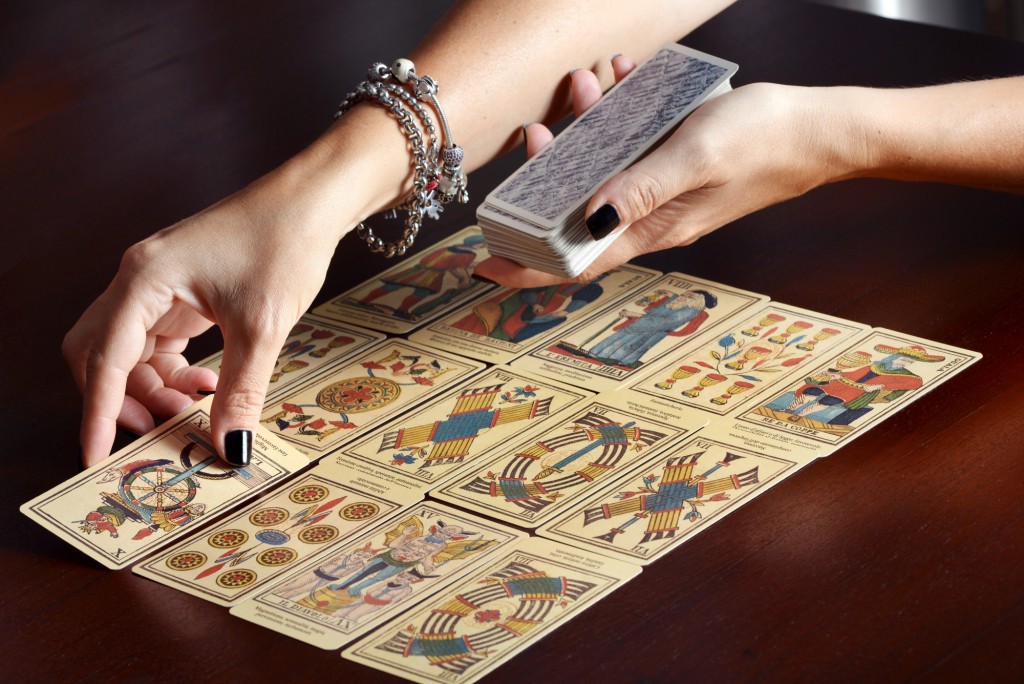Tarot cards have been around for centuries. The oldest known set dates back to Northern Italy in the 15th century. It’s said that the Duke of Milan’s family had them created in 1440 to play a game similar to modern-day bridge, called tarocchi.
History says that wasn’t until the middle of the 18th century that people started using tarot cards for mystical purposes. The meaning we now associate with tarot cards reading is far more complicated than any bridge game.
One common area of confusion is how to decipher the 16 court cards. And in particular, how to distinguish between the Queen and the Empress cards.
Keep reading while we break down the basics. We’ll go over the different court cards, explain how the Queen and Empress differ, and which is the more powerful of the two matriarchal leaders.
The Tarot Deck
The tarot deck breaks down into two main categories; the major arcana cards and the minor arcana cards. The minor arcana constitutes the majority of the cards; 56 suited cards out of a typical 78-card tarot deck.
The minor arcana contains four suits – swords, pentacles, wands, and cups – with 14 cards each, numbered ace to ten, plus the 16 mystical court cards (comparable to face cards in a modern-day deck of playing cards).
The 16 court cards are the four suited “face cards” – page, knight, queen, and king. For example, you could draw the Knight of Wands, the King of Cups, and so on.
The minor arcana temporarily represents the present state of affairs in your life. It gives you advice on how to deal with your current situation and reach your goals.
The 22 remaining cards represent the major arcana. This is where you’ll find the fool, the hanged man, the emperor, the empress, and so on. The cards in the major arcana are representative of the more overarching themes affecting your life.
Court Cards
The cards people have the hardest time interpreting are the court cards, the 16 “face cards” in the minor arcana.
All the other cards in the minor arcana give advice on how to deal with and fleeting and temporary issues in day to day life. The 16 court cards are a tool for self-development.
The formula for interpreting court cards is this: suit + rank + the reader’s intuition. This leaves some ambiguity to the interpretation possibilities and relies on the reader’s own intuition rather than having any objective meanings.
The card’s suit is the first element to consider when interpreting the court cards. Cup cards are indicative of emotion, relationships, and creativity. Pentacles represent practical, material, and financial matters.
Sword cards reflect conflict, power, truth, and action. And wand cards represent spirituality, passion, purpose, and inspiration.
Once the suit of the card is understood, it is then compared to its rank. The queen of cups would have a different meaning than the king of cups, and so on. It is then up to the reader to interpret the meaning based on their own intuition.
Queen Tarot Cards
First of all, it’s important not to associate the Queen card with only females. All the gender-specific characters in the tarot deck are non-binary when doing readings.
A Queen can be a biological male, and a King can be a biological female. It’s more to do with the card’s personality traits than its associated gender stereotypes.
If a Queen appears in your tarot reading, it represents a mature, knowledgeable person who has enough life experience to understand herself and the world around her.
A Queen is a person in touch with their feminine energy who has a nurturing and caring nature. More specific traits will come from the associated suit.
For example, the Queen of Swords will be a logical, thoughtful and rational feminine leader, while a Queen of Cups will be more of a dreamer; an emotional, vulnerable matriarch. In the minor arcana, the Queen is only outranked by the King.
The Empress Card
So which card is more powerful, the Queen or the Empress? The Empress is part of the major arcana and represents the divine femininity, abundance, fertility, and grace.
Unlike the Queen card, there is no suit to dictate which of her traits illuminates at any given time. She is secure in her being and consistently emanates inner beauty, will power, love, happiness, fertility, and abundance.
While a Queen might risk getting caught up in the daily duties of her high ranking role, the Empress has no such concerns. She is an unwavering source of feminine power and is always in touch with the earth she walks on.
She is a sign of pregnancy and motherhood. This can be taken literally, or as a representation of the birth of a new idea or new life path. The Empress represents all the Queen’s qualities demonstrated by each of the four suits.
So, in many ways, the Empress outranks the Queen. She is more solid and consistent in her themes and is not affected by external factors beyond her control. If the Empress card appears in your tarot reading, do not take it lightly.
What We’ve Learned
Reading tarot cards is not a simple task. It requires strong intuition, especially when interpreting court cards, as their meaning relies on the unique intuition of the reader.
It can get confusing, especially if you’ve had the exact same suited court cards in different sessions and received different readings. It is because court card readings are not objective.
They depend on the reader’s own intuition and the unique situation of the person whose cards are being read. The meaning of court cards will differ from reading to reading, from reader to reader.
If you’re striving for complete and total divine femininity, to be in touch with Mother Earth, sensuality, expression, abundance, and fertility, the Empress card is the highest representation possible.
This article has only touched the tip of the iceberg, and you won’t truly understand the mysticism of tarot cards until you have your first reading. Check out our tarot section for the best live and online readings.


Speak Your Mind